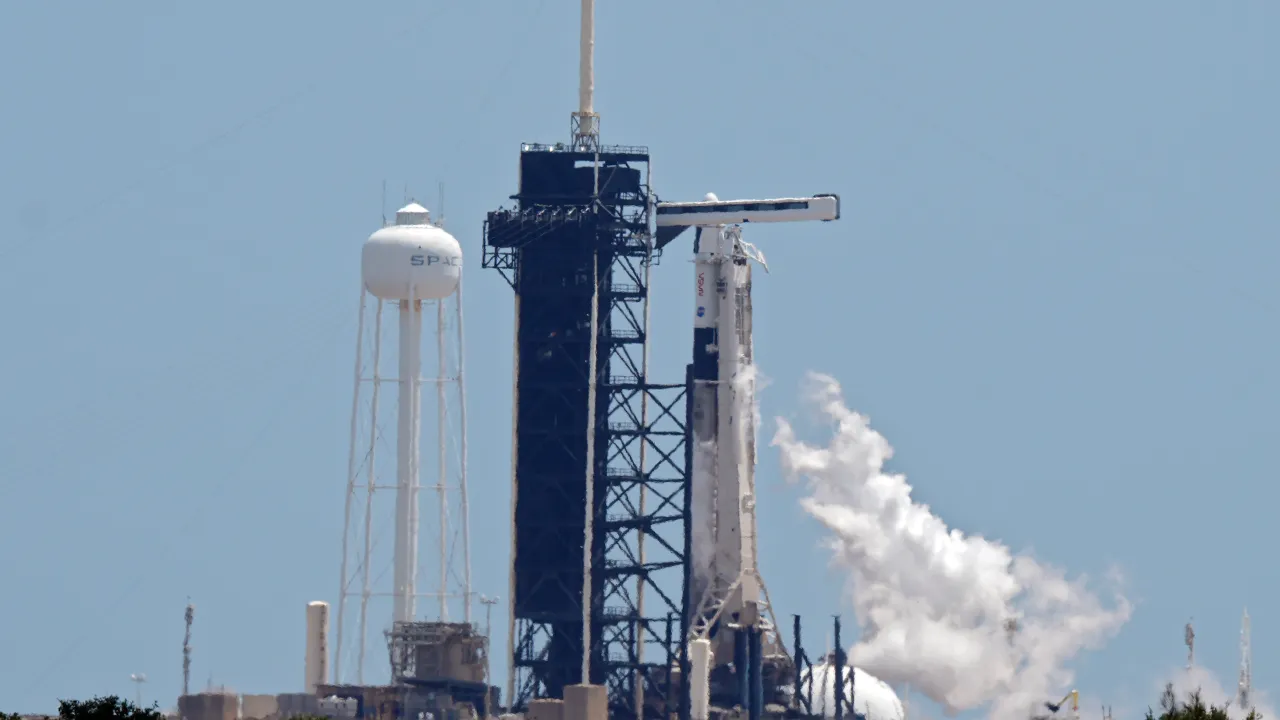
The realm of space exploration is filled with anticipation, innovation, and a touch of unpredictability. Recently, the much-anticipated SpaceX Crew-11 mission to the International Space Station (ISS) faced an unforeseen obstacle—cloud cover that ultimately led to a delay in launch plans. Such delays, though disappointing, are not uncommon in the world of aerospace, emphasizing the importance of safety and precision in every launch operation.
Understanding the Delay: How Weather Affects Space Missions
The Role of Clouds in Launch Operations
Cloud cover plays a critical role in the scheduling and safety of space launches. Launch sites are carefully monitored, and the presence of thick or stormy clouds can interfere with various aspects of the mission. Clouds, especially those associated with thunderstorms, pose significant risks such as lightning strikes and lightning-induced electrical discharges, which could jeopardize both the spacecraft and personnel involved.
In the recent case of the SpaceX Crew-11 mission, unfavorable cloud conditions prompted mission controllers to postpone the launch to ensure everything proceeds without risking crew safety. While weather is beyond human control, aerospace agencies, including NASA and private companies like SpaceX, continuously analyze weather patterns to determine optimal launch windows.
Impact of Weather Delays on Mission Schedules
Delays due to weather are often part of the meticulous planning process. Sometimes, meteorological conditions clear unexpectedly, allowing for quick rescheduling, but in other cases, delays may extend for several hours or even days. In the case of Crew-11, the presence of stormy clouds and thunderstorms in the vicinity of launch sites in Florida provided a precautionary reason for postponement.
Details of the Crew-11 Mission and Its Significance
Mission Overview
The SpaceX Crew-11 mission, an essential part of NASA’s ongoing efforts to support the International Space Station, involves the deployment of four astronauts aboard a Crew Dragon spacecraft. The mission’s primary objectives include conducting scientific research, technology demonstrations, and maintenance activities on the ISS during a six-month stay.
Pre-launch Preparations and Expectations
Leading up to the scheduled launch, extensive preparations were underway. The crew underwent training, spacecraft systems were rigorously tested, and contingency plans were put into place for various scenarios. The delay due to weather is an expected part of such complex operations, reaffirming the safety-first approach embraced by both SpaceX and NASA professionals.
NASA’s Role and Coordinated Efforts
NASA plays a crucial role in overseeing, coordinating, and monitoring launches like Crew-11. The agency’s officials analyze weather reports, coordinate with launch providers, and establish clear windows for launch attempts. Following the recent weather-related delay, NASA provided updates on the new launch schedule, reaffirming their commitment to crew safety and mission success.
Coverage and Public Engagement
NASA sets varied coverage plans for such missions, often including live streams and media updates to keep the public informed and engaged. The recent announcement about the delay was widely communicated, emphasizing transparency and community involvement in space exploration efforts.
The Broader Context of SpaceX’s Missions
SpaceX, founded by Elon Musk, has revolutionized space travel through innovative reusable rocket technology and efficient mission planning. Its partnership with NASA has led to numerous successful crewed and uncrewed missions, demonstrating the potential of private-public collaborations.
The Crew-11 mission is part of NASA’s Commercial Crew Program, aiming to reduce costs and increase access to low Earth orbit. Despite weather setbacks, SpaceX’s robust launch protocols and NASA’s thorough safety measures ensure that the mission is resilient against unforeseen challenges.
Future Missions and Expectations
While the current delay is a minor setback, it highlights the importance of flexibility in space missions. Launch windows are carefully spaced, and countdowns are paused or postponed based on real-time weather forecasts. This approach is essential to safeguarding invaluable crew members and spacecraft equipment.
The Impact of Weather Delays on Space Missions: Lessons Learned
Weather-related delays teach the aerospace community valuable lessons about risk management and contingency planning. They reinforce the importance of adaptive scheduling, real-time data analysis, and the need for flexible operational plans that can accommodate unexpected changes efficiently.
Conclusion: The Thrill Continues Despite Delays
While cloud cover temporarily hindered the launch of SpaceX Crew-11, it also served as a reminder of the unpredictable nature of space exploration. Every delay underscores the commitment to safety and precision, and it ultimately paves the way for successful missions in the future. Enthusiasts and professionals alike eagerly await the rescheduled launch, confident that this cautious approach will ensure a smooth and safe journey to the ISS.
As space agencies and private companies navigate these challenges, their resilience and dedication push the boundaries of human achievement. The delay is but a small pause before what promises to be an exciting chapter in space exploration.
Looking Ahead: What’s Next for Crew-11 and SpaceX
The upcoming launch window will be carefully selected based on weather forecasts and technical readiness. Once conditions are optimal, the Crew-11 astronauts will embark on their space voyage, continuing the vital work of scientific research and international cooperation aboard the ISS.
In the broader context, delays like these reaffirm the importance of meticulous planning, safety considerations, and adaptability — principles that drive progress in the space industry. Each successful mission, after navigating weather setbacks and technical hurdles, adds another chapter to humanity’s collective quest to explore the cosmos.
Final Thoughts
In space exploration, patience is as crucial as innovation. The recent weather-induced delay showcases the dedication of teams working tirelessly behind the scenes, ensuring that when the moment arrives, the launch will be as safe and successful as possible. The skies may have temporarily held back the Crew-11 mission, but they cannot dampen the spirit of discovery and adventure that propels us forward.
For more updated news please keep visiting Prime News World.








